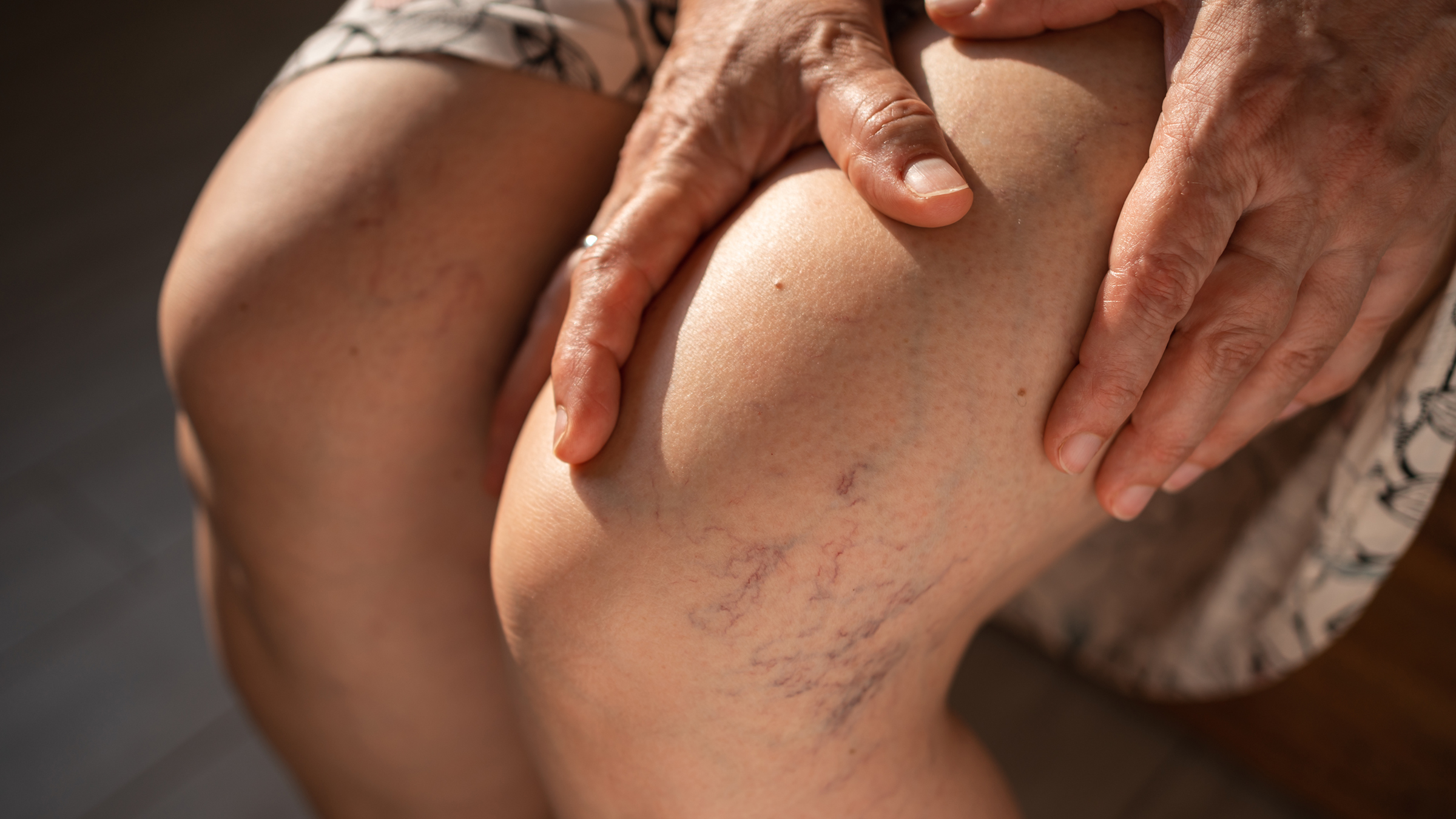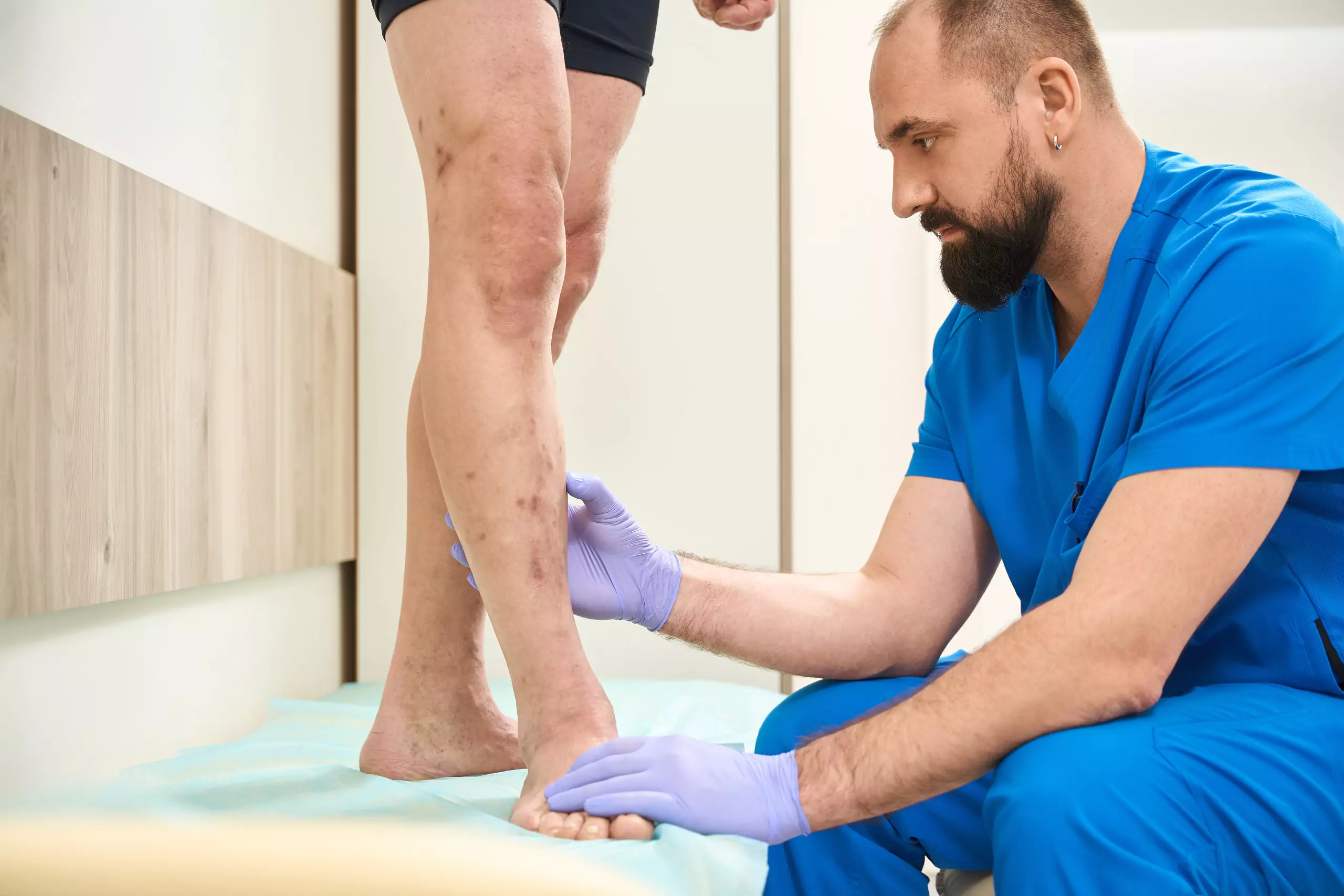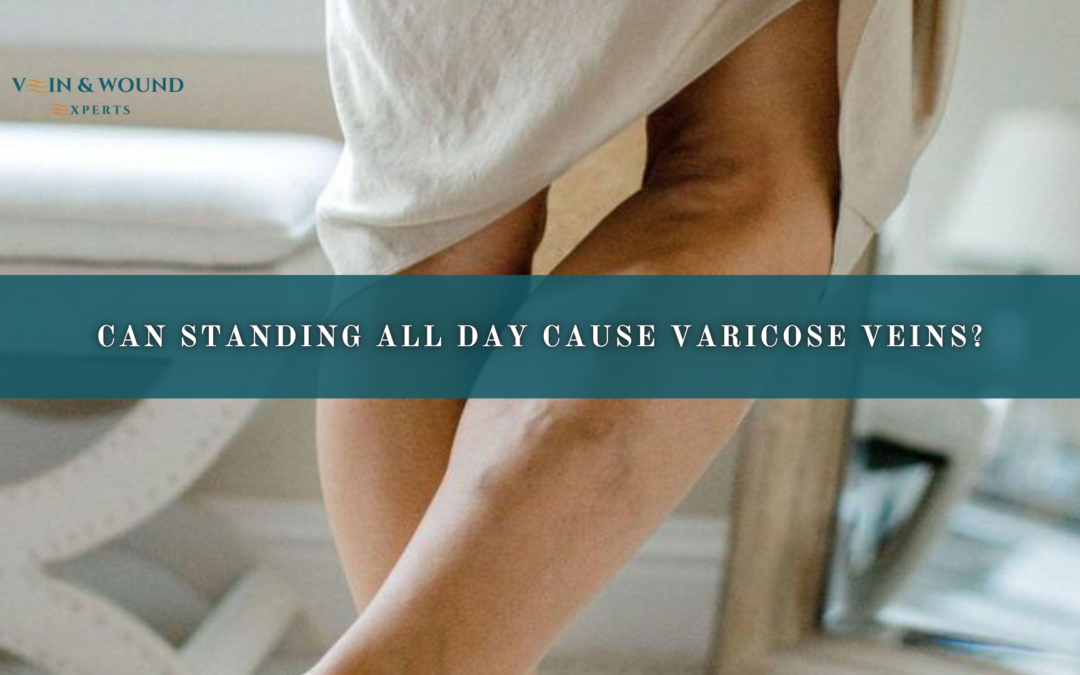How Standing for Long Hours Affects Your Veins🦵👣

Standing all day can have a significant impact on your vein health, especially for individuals with jobs that require prolonged standing. As a result, varicose veins may develop, and symptoms like leg swelling, discomfort, and heaviness may arise. But how exactly does standing all day cause these problems, and what can you do to reduce the risk?
The Impact of Standing on Vein Health 🦵
When we stand for long periods, the blood in our veins faces more pressure as it fights gravity to flow upwards to the heart. In a healthy vein, this is managed by a system of valves that open and close to ensure blood flows in one direction. However, extended standing can weaken these valves over time, leading to blood pooling in the lower legs. This can result in the formation of standing all day varicose veins.
Varicose veins occur when the veins become enlarged, twisted, and swollen due to this blood buildup. For many people, standing on their feet for hours at a time, such as in retail, healthcare, or factory work, can worsen these conditions. The more frequently someone stands without proper care, the more at risk they become for varicose veins and other vein-related issues.
Standing All Day: A Risk Factor for Varicose Veins 🌟
Working in a standing-intensive job might seem manageable in the short term, but over time, it can lead to persistent vein problems. The constant pressure on your veins can cause the walls to weaken, leading to poor circulation. This can result in leg cramps, swelling, and, eventually, the formation of varicose veins.
If left untreated, varicose veins can cause significant pain and discomfort, which might also interfere with your ability to work or enjoy everyday activities. Fortunately, with proper varicose veins treatment and preventative care, you can manage these risks and maintain healthier legs.
How to Prevent Varicose Veins from Prolonged Standing 💡

If your job or daily routine requires you to stand for long periods, there are several strategies you can incorporate to reduce the risk of developing varicose veins and to relieve any existing symptoms.
1. Take Breaks and Move Regularly 🏃♀️
One of the best ways to alleviate the pressure on your veins is to take short breaks throughout the day. Walking, stretching, or even shifting your weight from one leg to the other can improve circulation. A few minutes of movement every hour can significantly reduce the strain on your veins.
2. Wear Compression Stockings 👢
Compression stockings help promote blood flow in the legs and prevent blood from pooling in the lower extremities. These stockings provide gentle pressure, which encourages the blood to flow back toward the heart, reducing swelling and discomfort.
3. Elevate Your Legs 📐
At the end of your day, elevate your legs above heart level to help facilitate blood flow and reduce swelling. Lying down with your legs propped up for 20 minutes a few times a day can make a noticeable difference.
4. Stay Active and Maintain a Healthy Weight 🥗
Engaging in regular physical activity like walking, swimming, or cycling can enhance blood circulation. Additionally, maintaining a healthy weight reduces the strain on your veins, lowering the chances of developing varicose veins.
When to Consult a Vein Doctor 🩺
If you already notice symptoms of varicose veins, such as swelling, heaviness, or visible bulging veins, it may be time to consult a vascular specialist. A vein clinic can offer specialized treatments, including minimally invasive procedures like sclerotherapy, endovenous laser therapy (EVLT), and vein stripping, depending on the severity of your condition.
These treatments are designed to close off problematic veins, redirecting blood flow to healthier vessels. The procedures are typically quick and require little downtime, allowing you to return to normal activities sooner.
Varicose Veins Treatment Options 🌱

There are various options available at vein clinics to help treat varicose veins and improve overall vein health. Whether you’re dealing with mild discomfort or more severe cases of varicose veins, it’s essential to explore treatment options that suit your specific needs.
Sclerotherapy: This involves injecting a solution into the vein that causes it to collapse and eventually fade. It’s a common treatment for smaller varicose veins and spider veins.
Endovenous Laser Therapy (EVLT): A laser is used to close off the affected vein, which is then absorbed by the body. This treatment is effective for larger veins and is minimally invasive.
Surgical Treatments: In severe cases, surgery may be necessary to remove the varicose veins. However, with modern advancements in vein treatment, surgery is less commonly required.
Prolonged Standing and the Importance of Prevention ✨
While standing all day may be inevitable for many, taking preventive measures can significantly reduce the risk of developing varicose veins and alleviate the symptoms associated with this condition. With regular movement, proper support, and treatment options available at specialized vascular centers you can protect your vein health and live comfortably.
If you’re concerned about your veins or experiencing symptoms, make sure to consult a vein doctor for a proper evaluation and personalized treatment plan. Early intervention is key to managing and preventing more severe vein conditions, ensuring you can continue with your daily activities without discomfort.
Andy Scarifi
Position
